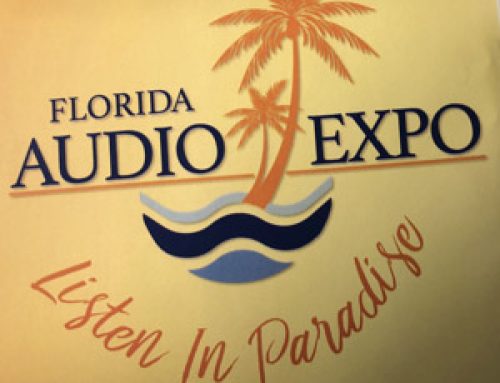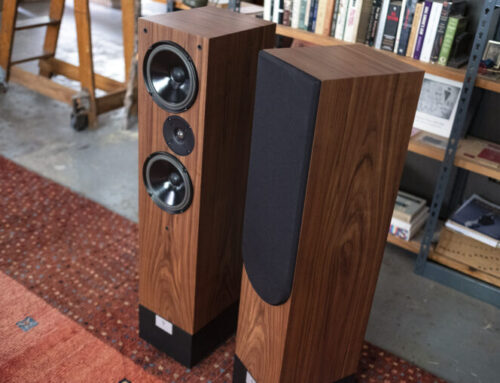The Border Patrol Control Unit pre-amplifier
Copper bottom! Border Patrol has finally finished its preamplifier, has it been worth the wait?
 Though you’d not guess it from the website Border Patrol now operates from Maryland on the East coast of the United States, this continental shift seems to have had a subtle but distinct effect on the preamplifier or Control Unit as it’s known. The first and rather discreetly marketed BP Control Unit was nowhere near as heavy or sharp edged as its successor which is a more serious beast all round. To be fair the first BP preamp we had was more of a prototype than a manufactured product but that didn’t stop it working well and being professionally finished. Yet it didn’t have the sharp edged, thick aluminium facia or front panel on/off switch of this ‘shiny’ new beast, nor did it offer the option of a valve phono stage or all copper chassis construction.
Though you’d not guess it from the website Border Patrol now operates from Maryland on the East coast of the United States, this continental shift seems to have had a subtle but distinct effect on the preamplifier or Control Unit as it’s known. The first and rather discreetly marketed BP Control Unit was nowhere near as heavy or sharp edged as its successor which is a more serious beast all round. To be fair the first BP preamp we had was more of a prototype than a manufactured product but that didn’t stop it working well and being professionally finished. Yet it didn’t have the sharp edged, thick aluminium facia or front panel on/off switch of this ‘shiny’ new beast, nor did it offer the option of a valve phono stage or all copper chassis construction.
When this Control Unit was launched it was offered in CU1 and CU2 varieties, the former being encased in aluminium and featuring some reduction in component quality for a 30 per cent cost saving. As things turned out the market was far more interested in the full monty CU2 so the more affordable variant has been dropped from the range. We asked BP proprietor Gary Dews what the advantages of the 2mm copper plate chassis are and he explained that it produces a richer sound than aluminium which is grainy, bleached and wispy by comparison. Possible reasons for this are the lower ferrous content of copper, ie it’s less magnetic, aluminium is not very magnetic but slide a magnet down an ally sheet and a copper sheet and you’ll note it moves more quickly down the copper one. The copper chassis is also twice the weight of the aluminium and this makes it harder to resonate, it’s also more ductile (malleable) which is said to be a benefit.
Compared to its predecessor the new Control Unit uses the same negative feedback free circuit but has higher quality components such as Blackgate power supply caps and Hovland Musicaps for signal coupling. The CU’s USP is the use of choke input filtering (CIF) for the heater supply, this is combined with a CIF high voltage supply using an EZ80 valve for rectification, as found in the original CU, which produces better regulation, lower noise floor and greater impunity to RF entering the signal path.
BP chose a single 5687 double triode valve signal amplification and used it in anode follower configuration because of the simplicity that this route offers. The price for this simplicity is a limited ability to drive interconnect cable and BP recommends keeping this link below three metres. It’s a technique that also works rather better with low sensitivity power amps such as those in the BP range, more sensitive designs will tend to give too much overall gain which can exaggerate microphonic tendencies in the valves.
The moving magnet phono stage adds Ł700 to the cost of the CU and as with the line stage is fully hardwired, it is a two stage design using an ECC83 and a 6922 double triode. At present there are no plans to offer a step-up transformer which would make this stage work with MC cartridges but these are made by other companies should you want to take the serious vinyl route.
The Control Unit has five line level inputs in standard guise or four plus phono with that stage onboard, there is a pair of output sockets and a tape out. Front panel controls are minimal and remote control is unfortunately not an option – this is a hardcore product after all.
Sound quality
There is a tendency to think of valve equipment as being slightly rose tinted, smooth and a little soft, this prejudice is not entirely surprising because there have been plenty of tube powered amplifiers made that fit that picture. However there have been almost as many which do not and Border Patrol’s creations tend to be in this latter camp, so much so that some in the ‘romance of valves’ camp describe the kit as being rather too hi-fi. We are of the opinion that whatever technology you use to create an audio component the end result is what counts, if it is resolute in all the right areas and it draws you into the music then it does what is intended. Valve romance is very nice, charming in fact but it is a coloration or distortion and thus diverts us from the goal of high fidelity.
The Control Unit is indeed pretty neutral by valve standards, compare it with a passive pot however and you’ll notice that high frequencies are slightly rolled off and the midrange is a little more obvious, while next to a Bryston BP25 preamp the CU’s bass is a little soft edged. On the credit side there is plenty to make up for these limitations at the frequency extremes, the midrange is transparent and vivid and the sense of timing right on the money.
The bass while not as crunchy as trannies will deliver is not short on weight or depth and it scores very highly on articulation, tonal resolve is a clear strength of tube amps and this is no exception. The electric bass on Neil Ardley’s Kaleidoscope of Rainbows is positively lush in its vibrancy and each note has a solidity that makes for a convincing sense of presence in the room.
Higher up the tonal scale things get even more entertaining, this is where you get a sense of transparency and resolve that will win over even the most hard hearted audiophile. It’s where music’s power to communicate is at its strongest, and this preamp makes the most of it without going overboard, thus Gillian Welch is as heart rending as one can bare thanks to a balance that’s relaxed but puts the edges right where they should be. The voice is beautifully warm but the guitars still have plenty of zing. This is the nub of the Border Patrol, its ability to get to the heart of the music without forgoing the strength of the elements that make it up, its fluid but also well separated.
We used an old Audio Innovations Series 1000 step-up transformer to bring a vdH Condor cartridge’s output up to a level that the BP’s phono stage could deal with to see how it fared. An experiment that revealed just how dynamic vinyl can be in the right company, the power of Ardley’s ‘prog orchestra’ delivering substantial dynamic energy and plenty of harmonic detail. The degree to which the BP unearths the organic, three dimensional aspects of an LP is particularly engaging, the term ‘chewy’ seeming wholly appropriate when trying to describe the sound of a well recorded double bass. Of course when terms like that start to turn up in the notes you know that an element of charm has taken over and you are having far too much fun to be observing results in an impartial manner!
There you go, even the toughest among us are not immune to the beguiling qualities of a fine valve amplier, and that’s in the context of hard nosed transistor power amplification. With one of BP’s single ended triodes as well analytical assessment would be nigh on impossible, still they are ‘hi-fi’ so maybe decorum could be maintained. Either way it’s hard to turn the music off.
Excellent transparency and dynamics combined with good focus and low noise, nice solid construction, lovely phono stage.
Needs short (max 3m) interconnect to a low sensitivity power amp for best results, no remote option, MC cartridges will need a step-up.
Conclusion This substantial and nicely built preamplifier delivers all the positive qualities of tubes while maintaining a degree of neutrality that is rare for the breed, if you want to get the heart of the music without losing its head this is a powerful tool.
Key features: Size (HxWxD): 12x45x35cm Weight: 12kg Solid copper plate chassis Five line inputs Optional phono stage.




Leave A Comment